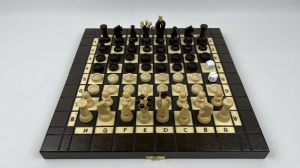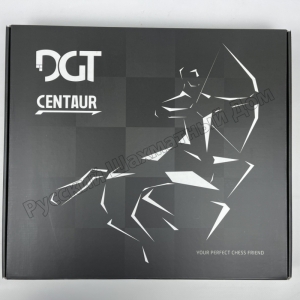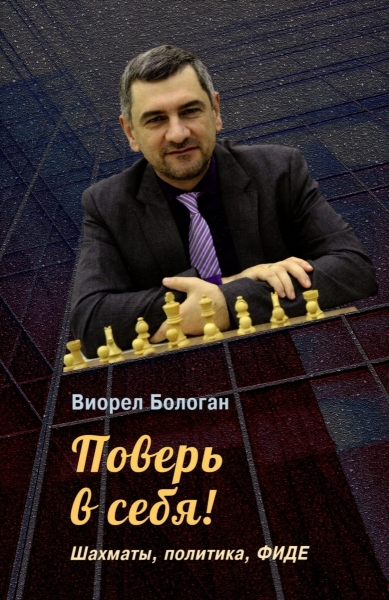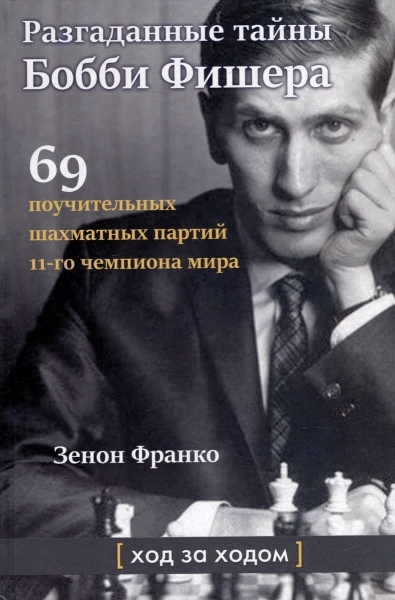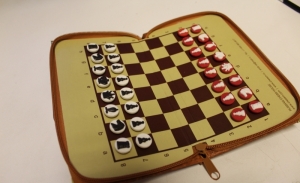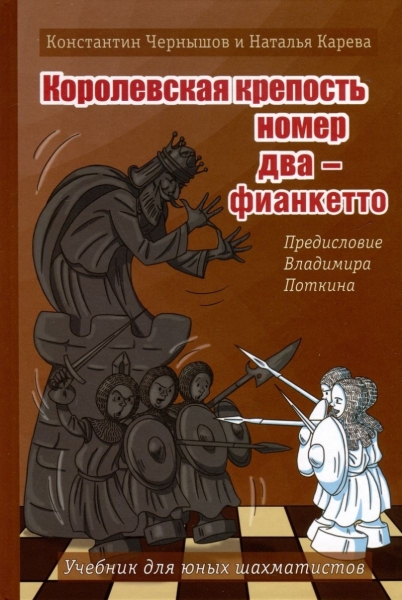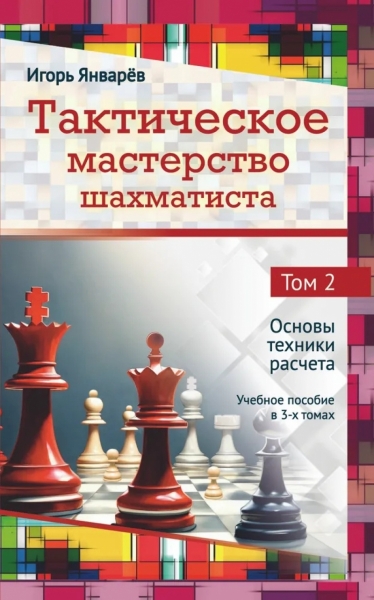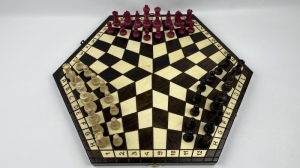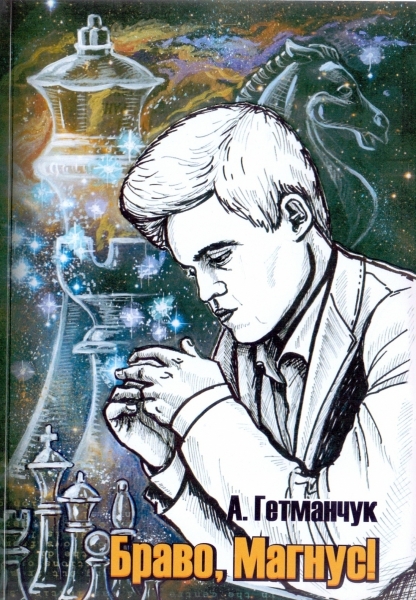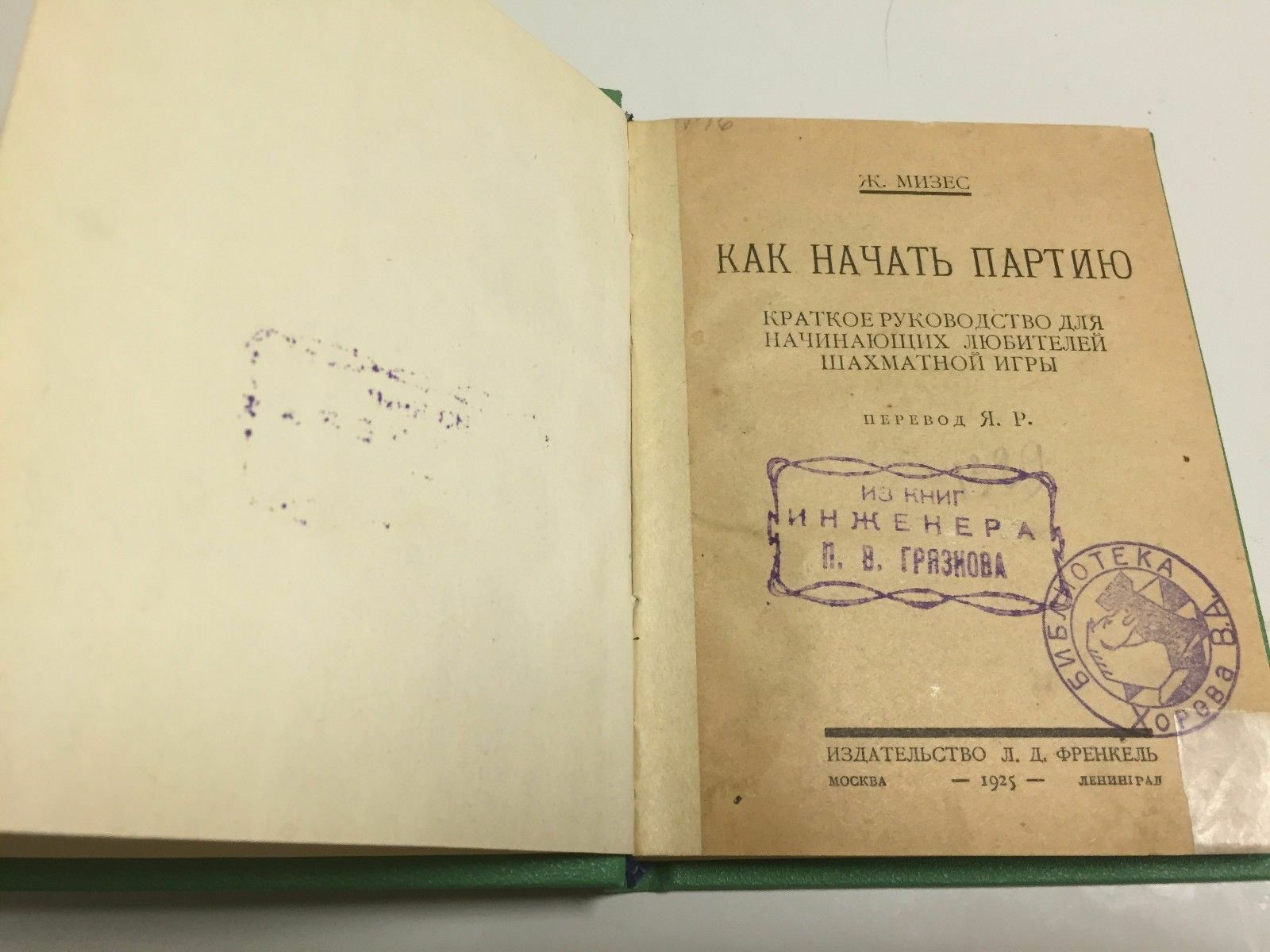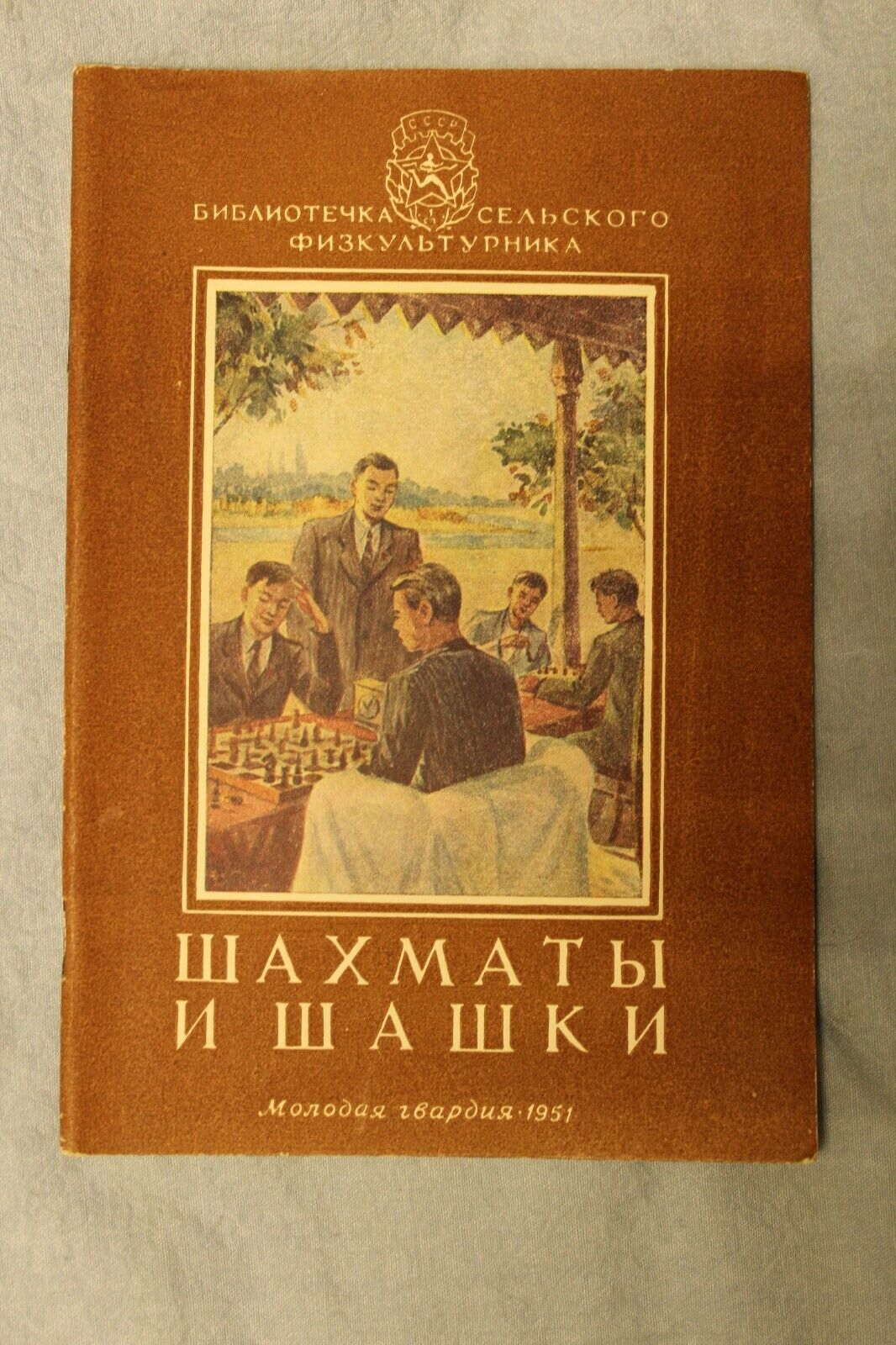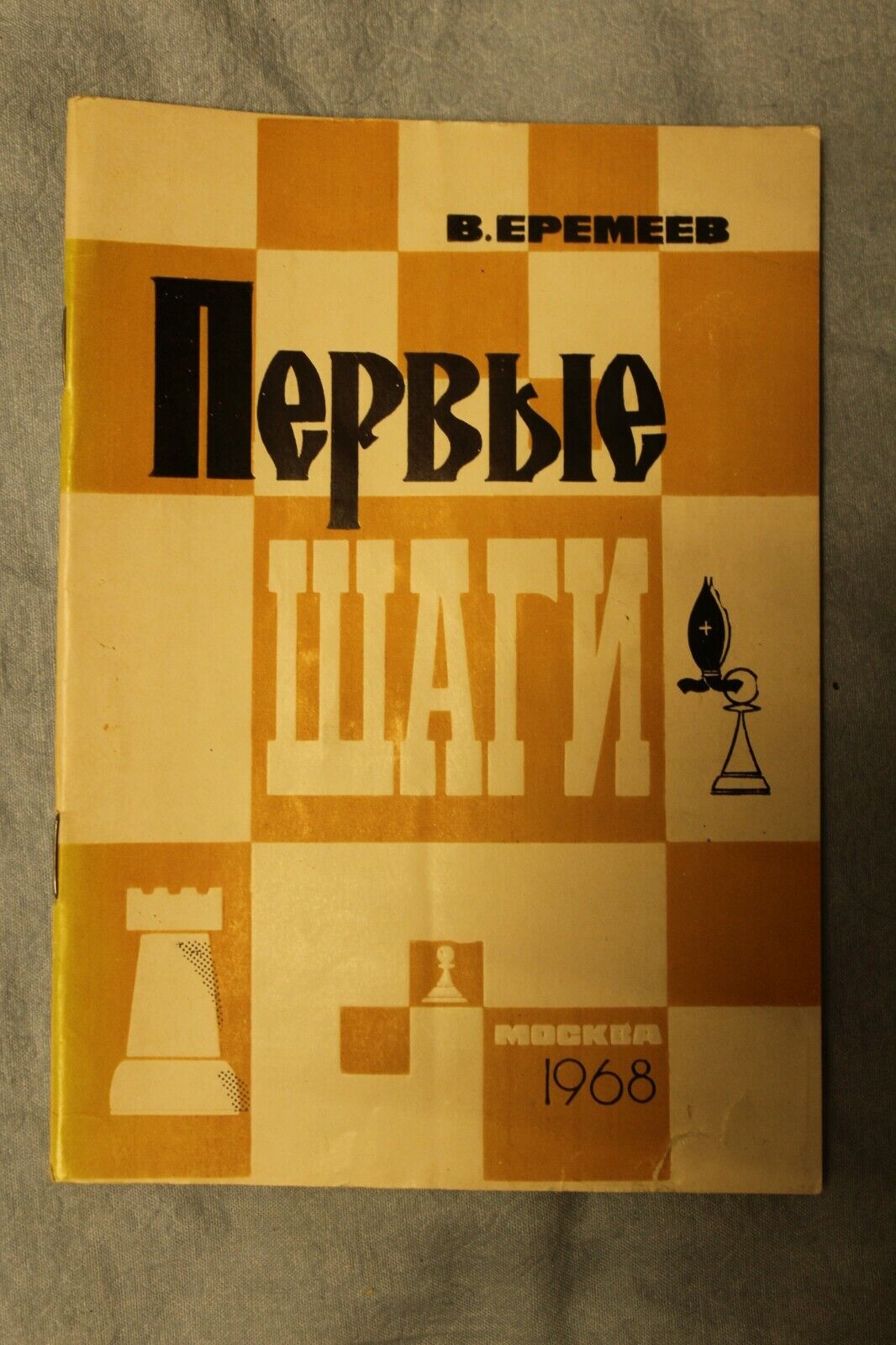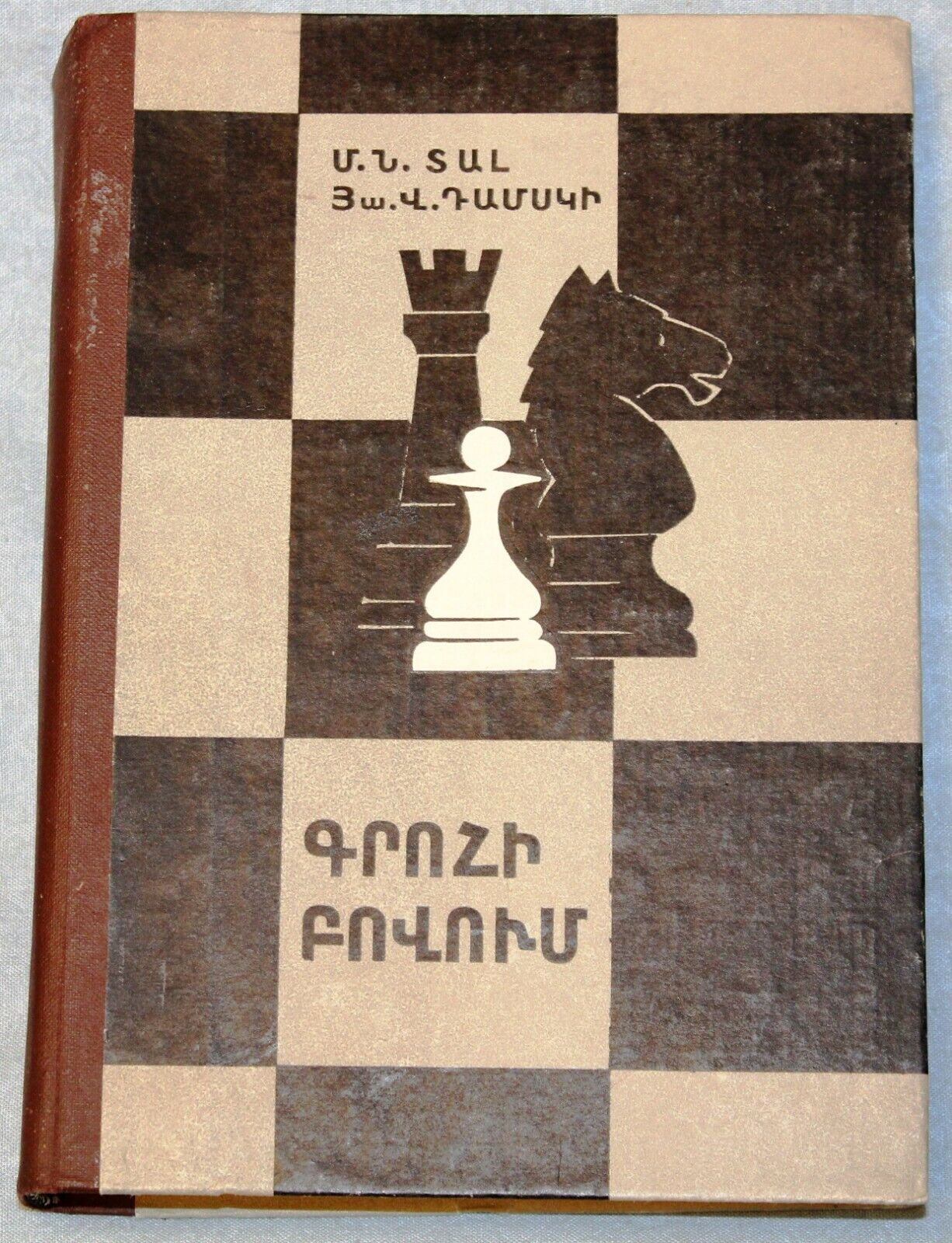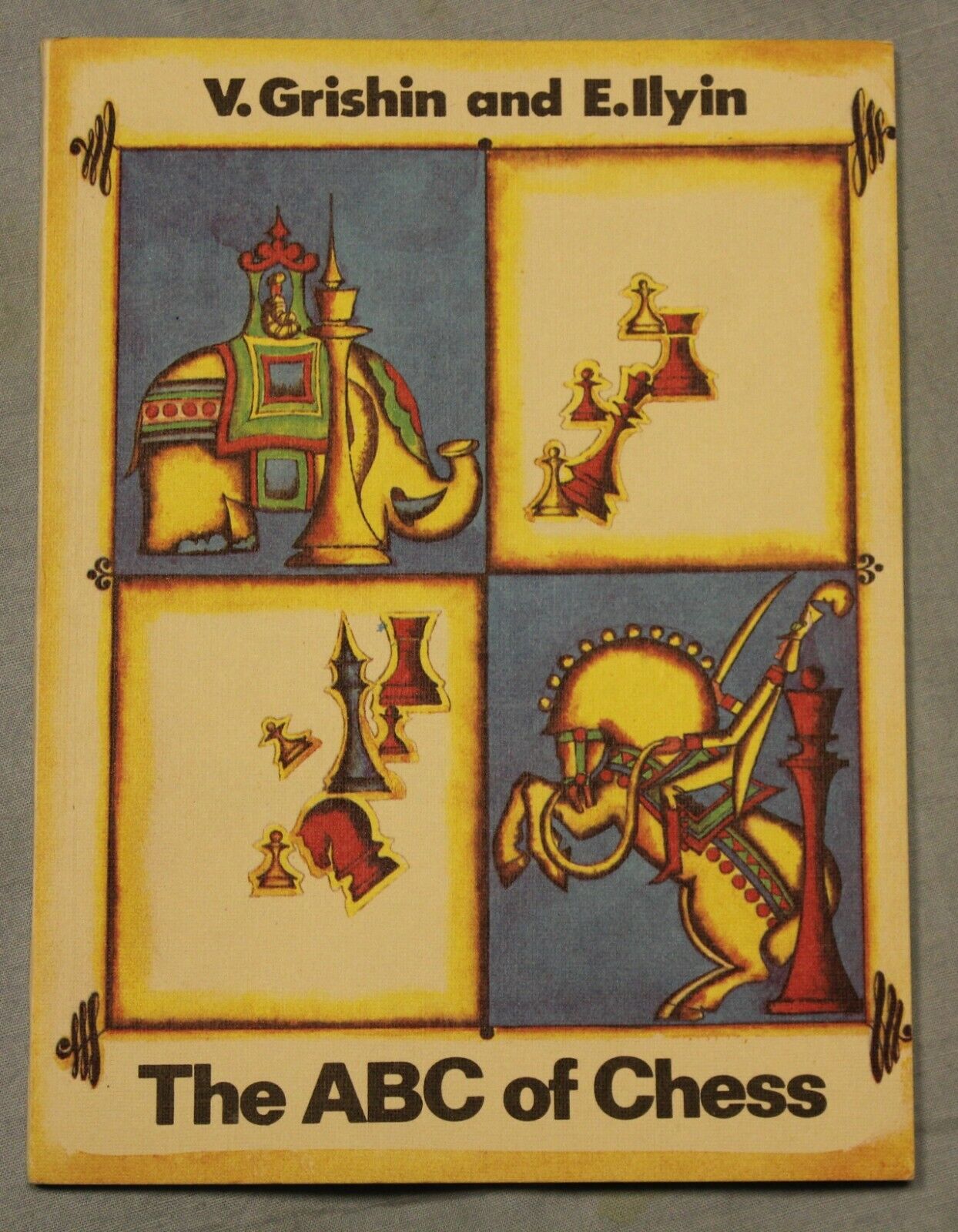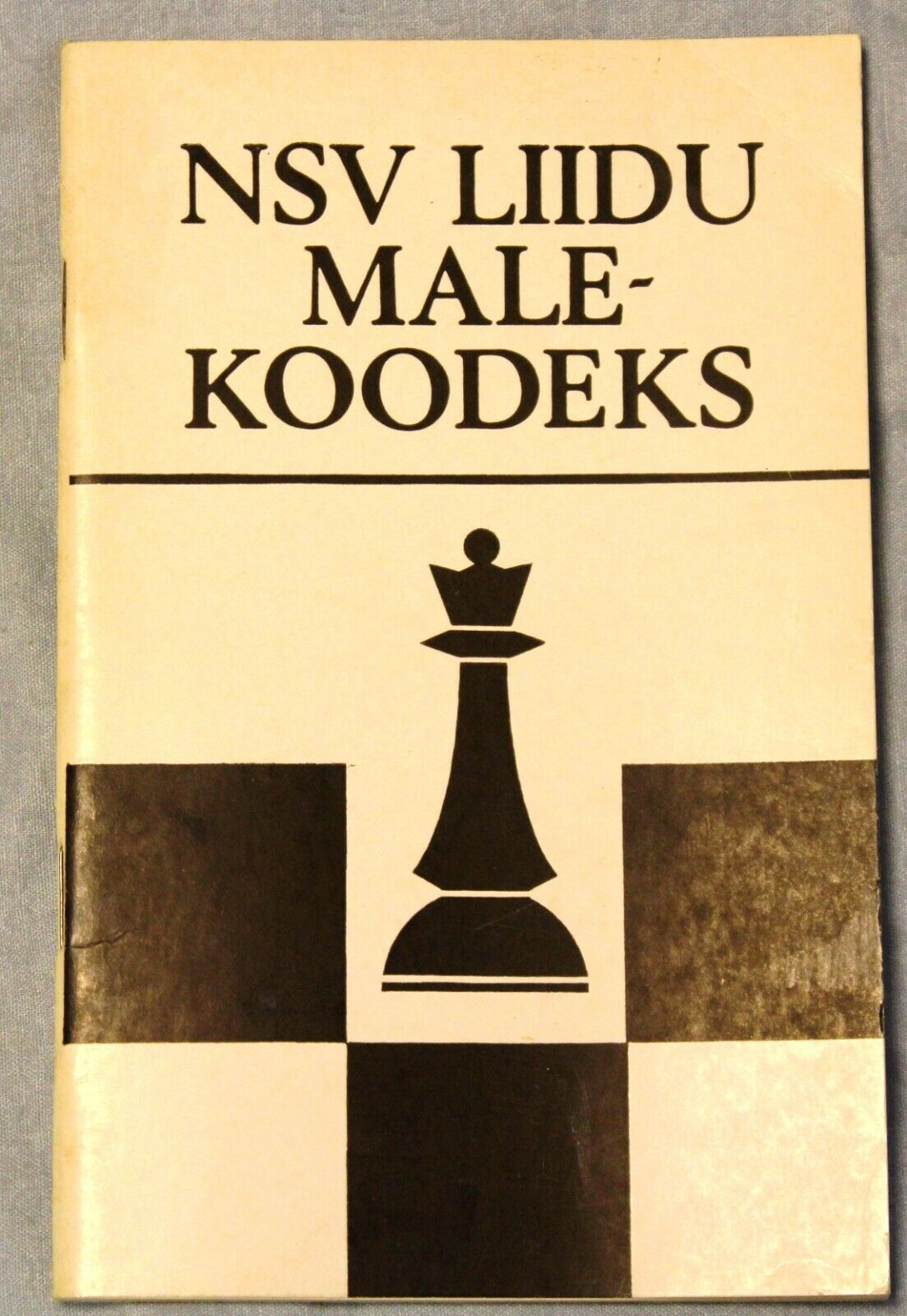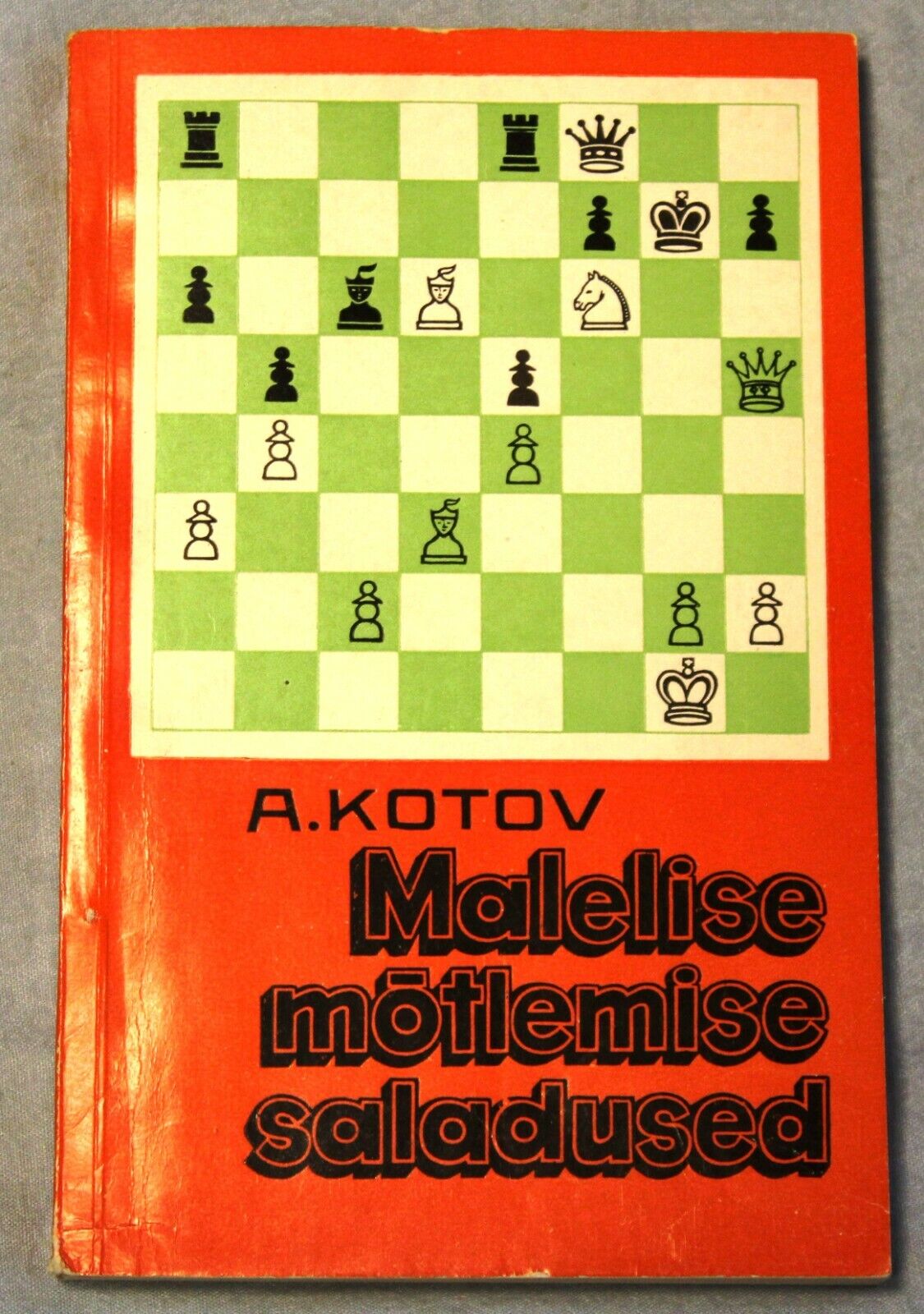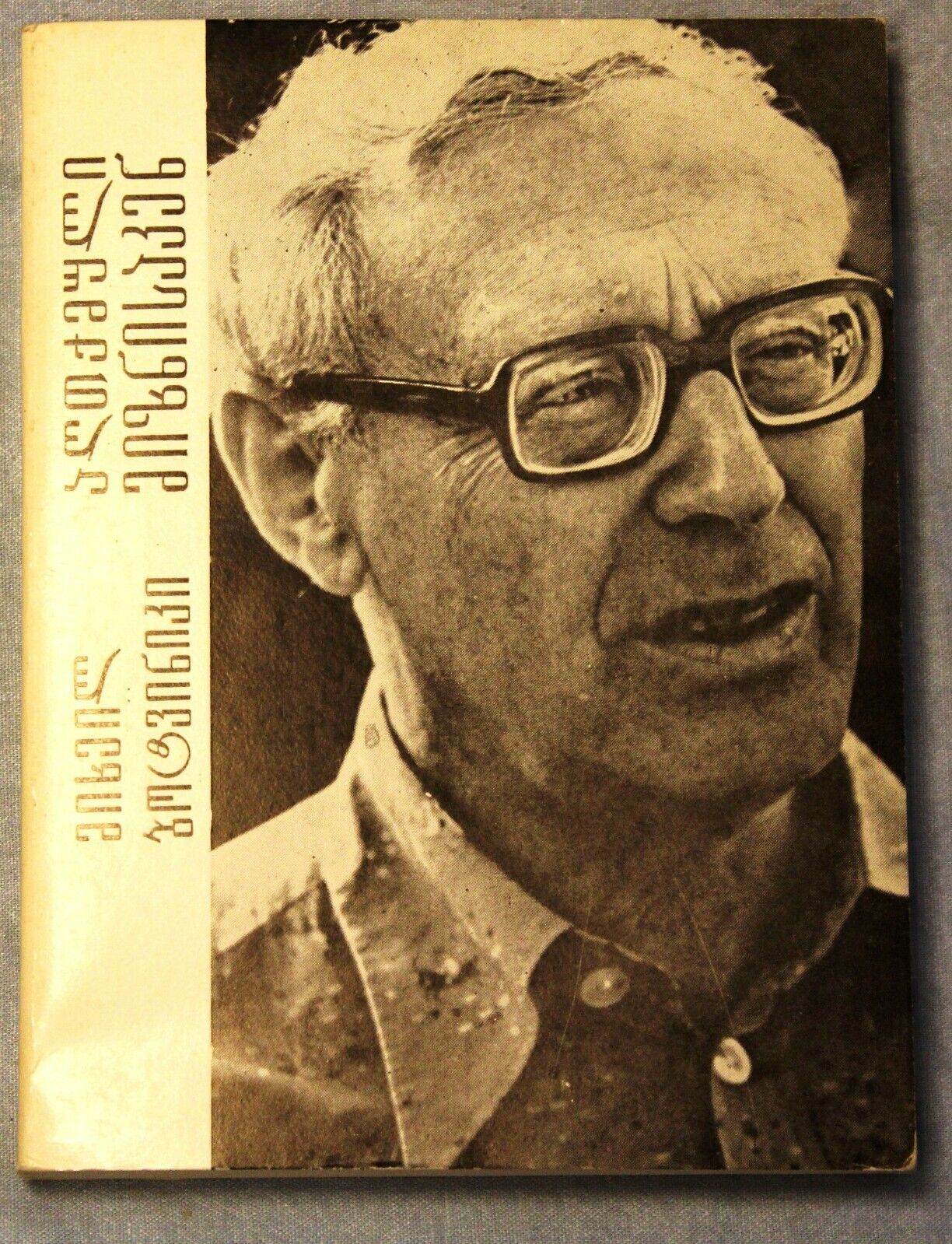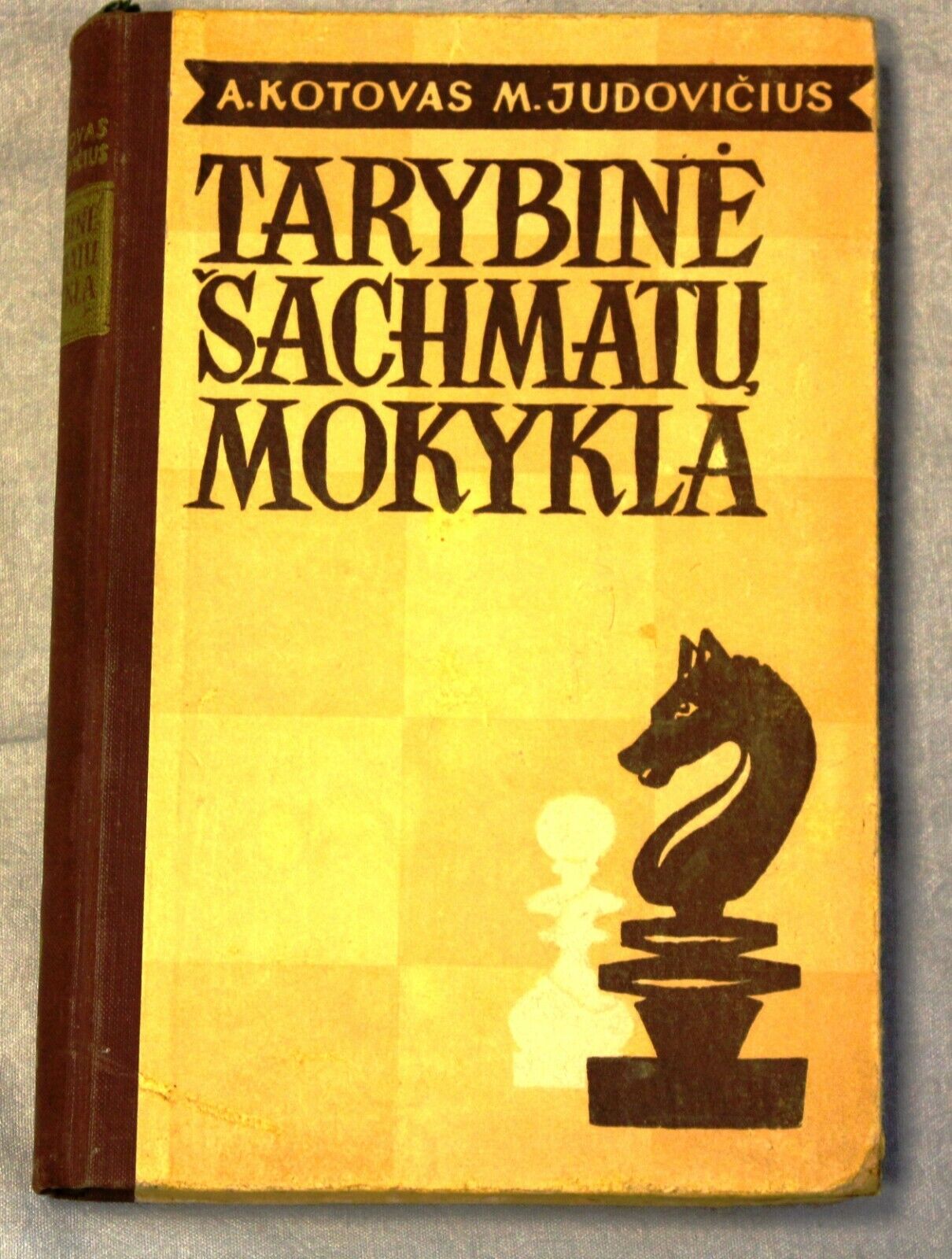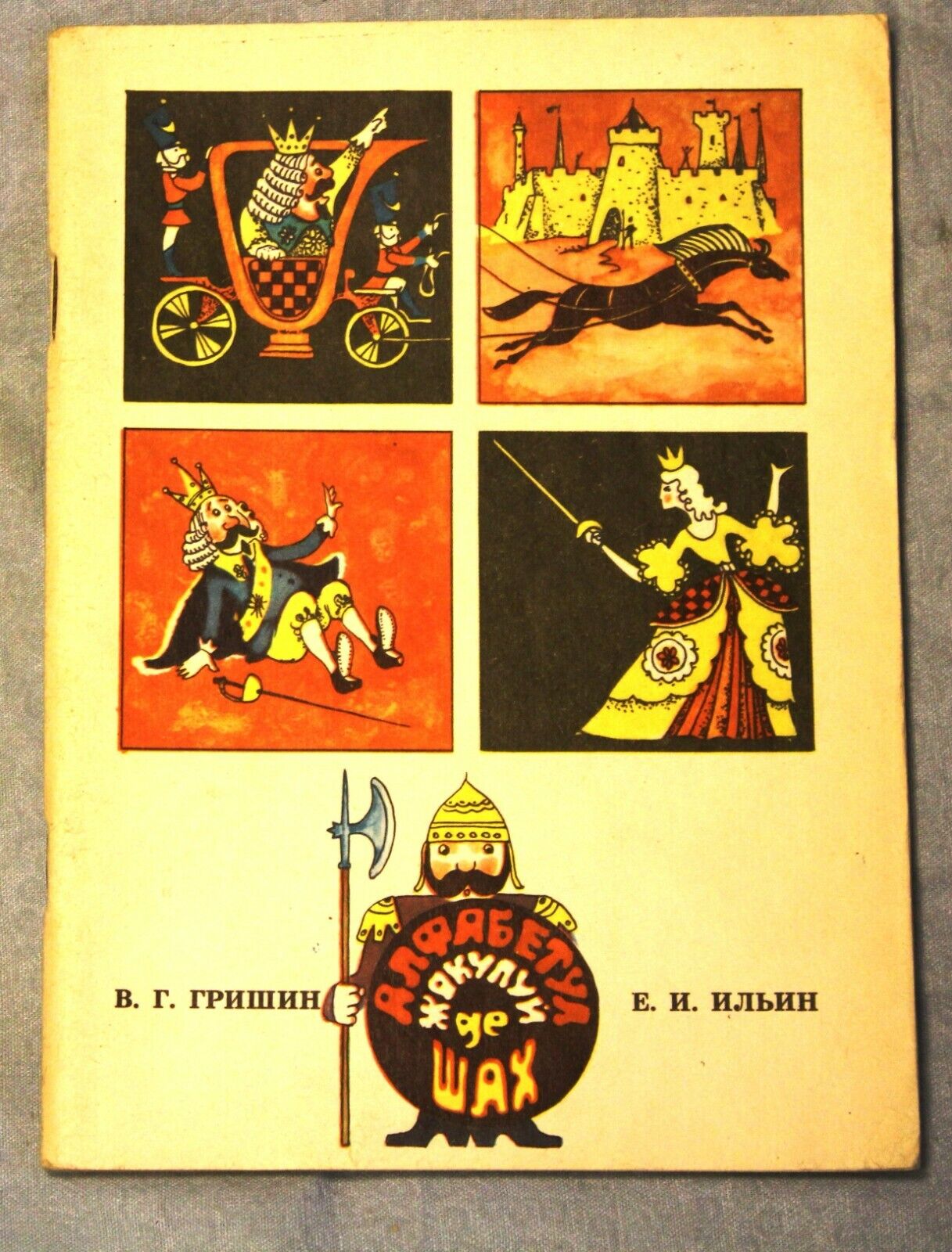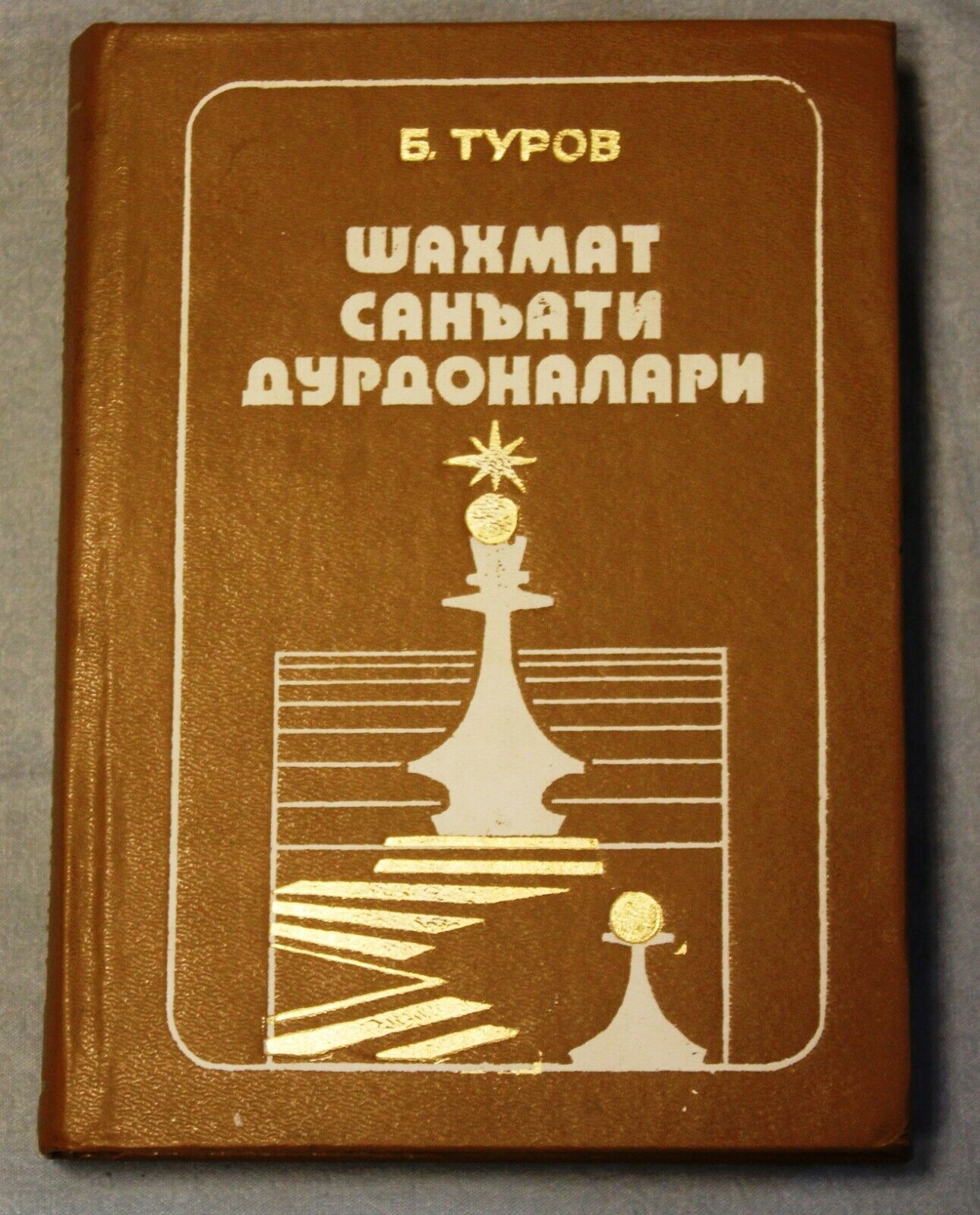eBay items
-
50.00 $
Up for sale is a Soviet chess book - "How to Start A Chess Game" by Jacques Mieses. BOOK FROM THE PERSONAL COLLECTION OF V.A. HOREV LIBRARY. Book on Russian, with examples of chess games. If you need more photos or info - please feel free to message us! AUTHOR - Jacques Mieses PUBLISHING - Moscow-Leningrad YEAR - 1925 STYLE - Hard cover PAGES - 95 Worldwide shipping option is available! Feel free to ask any questions please. What you see is what you get, for more info or photos - please message us!Box C
-
20.00 $
Published: Moscow, 1951 Author: N. Polevoi Edited by: P. Romanovsky Binding: softcover Language: Russian Condition: good 53 pages Size: 14,5 x 21 cm Viktor Davydovich Baturinsky - Soviet chess functionary; international arbiter . Chairman of the chess section of the Moscow City Council of Trade Unions (1934-1935), the Chess Council of the Central Committee of the USSR (1955-1957), Deputy Chairman of the USSR Chess Federation (1974-1986). Director of the USSR Central School of Chess (1970-1981), Head of the Chess Department (1971-1981) and head chess coach (1981-1985) of the USSR Sports Committee. Head of the Soviet delegation to the World Championship matches (1978 and 1981); organizer of many All-Union and international competitions.EK33
-
16.00 $
Published: Moscow, 1968 Author: V. Eremeev Binding: softcover Language: Russian 40 pages Contents: all game parts, analysis, compositions, results, players, statistics. Condition: very good Size: 14 x 20 cm Viktor Davydovich Baturinsky - Soviet chess functionary; international arbiter . Chairman of the chess section of the Moscow City Council of Trade Unions (1934-1935), the Chess Council of the Central Committee of the USSR (1955-1957), Deputy Chairman of the USSR Chess Federation (1974-1986). Director of the USSR Central School of Chess (1970-1981), Head of the Chess Department (1971-1981) and head chess coach (1981-1985) of the USSR Sports Committee. Head of the Soviet delegation to the World Championship matches (1978 and 1981); organizer of many All-Union and international competitions.EK33
-
75.00 $
Published: Leningrad, 1930 Binding: softcover Language: Russian Condition: acceptable 87 pages Size: 21,5 x 15 cm Viktor Davydovich Baturinsky - Soviet chess functionary; international arbiter . Chairman of the chess section of the Moscow City Council of Trade Unions (1934-1935), the Chess Council of the Central Committee of the USSR (1955-1957), Deputy Chairman of the USSR Chess Federation (1974-1986). Director of the USSR Central School of Chess (1970-1981), Head of the Chess Department (1971-1981) and head chess coach (1981-1985) of the USSR Sports Committee. Head of the Soviet delegation to the World Championship matches (1978 and 1981); organizer of many All-Union and international competitions.EK33
-
38.00 $
Soviet Chess Book in Armenian: Author: M. Tal, Y. Damsky Into the fire of attack Published: Yerevan, 1983 Binding: Hard Language: Armenian 384 pagesЕК 25
-
12.00 $
Soviet Chess Book in English: Author: V. Grishin, E. Ilyin The ABC of Chess Published: Moscow, 1986 Binding: Soft Language: English 88 pages This book was first published in the mighty Soviet Union in 1972. It is NOT a basic book to learn how to play chess or how to improve your game. It is a story book with the chess pieces as a background. It is suitable to be read to children who are interested in the game. The basic moves and some simple mates are provided, but mostly it is a story book. The great thing about this book is the art work and design. The book is filled with drawings of kings, elephants, knights on horseback, boats and soldiers. The front and back cover provide examples of this. There are 63 full color drawings in the original book. The presence of elephants and boats in this book is because the chess piece we call the bishop is called the elephant in Russian and the piece we call the rook is called the boat in Russian. This book was originally published in the Soviet Union as a 4-color book. Almost every page contained colorful drawings of chess related themes such as armies in battle. There are 63 full color drawings in the original book. Art: MN
-
20.00 $
Soviet Chess Book in Estonian: Chess code of the USSR. Published: Tallinn,1979 Binding: Soft Language: Estonian 88 pagesЕК 24
-
25.00 $
Soviet Chess Book in Estonian: Author: A. Kotov. Secrets of chess player's thinking. Published: Tallinn,1979 Binding: Soft Language: Estonian 200 pagesЕК 26
-
35.00 $
Soviet Chess Book in Georgian: Author: M. Botvinnik Towards achieving the goal Published: Tbilisi, 1982 Binding: Soft Language: Georgian 352 pagesЕК 24 Mikhail Moiseyevich Botvinnik was a Soviet and Russian chess grandmaster and World Chess Champion for most of 1948 to 1963. Working as an electrical engineer and computer scientist at the same time, he was one of the very few players who achieved distinction in another career while playing top-class competitive chess. He was also a pioneer of computer chess.
-
40.00 $
Soviet Chess Book in Lithuanian: Author: A. Kotov, M. Yudovich Soviet chess school Published: Vilnius, 1957 Binding: Hard Language: Lithuanian 376 pagesEK 24
-
25.00 $
Soviet Chess Book in Moldovan: Author: V. Grishin, E. Ilyin Chess alphabet Published: Kishinev, 1982 Binding: Soft Language: Moldovan 70 pagesЕК 25
-
35.00 $
Soviet Chess Book in Uzbek: Author: B. Turov Pearls of chess art Published: Tashkent, 1987 Binding: Hard Language: Uzbek 384 pagesЕК 26
-
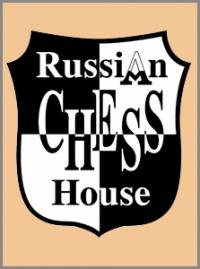 The life of a chess player in the system. Memories of the grandmaster
Author:
The life of a chess player in the system. Memories of the grandmaster
Author:
Averbah 45.00 $ -
 Три матча Ботвинник-Смыслов
Author:
Три матча Ботвинник-Смыслов
Author:
Botvinnik 45.00 $ -
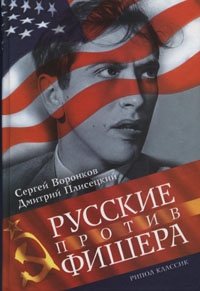 Russians vs Fisher
Author:
Russians vs Fisher
Author:
Voronkov 65.00 $ -
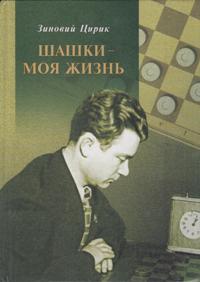 Checkers is my life
Author:
Checkers is my life
Author:
Ciric 87.50 $ -
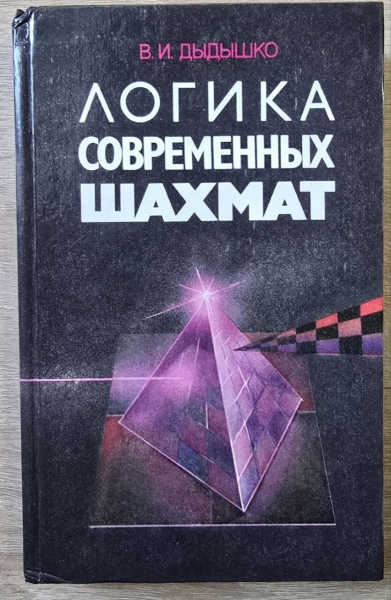 The logic of modern chess
Author:
The logic of modern chess
Author:
Dydyshko 72.50 $ -
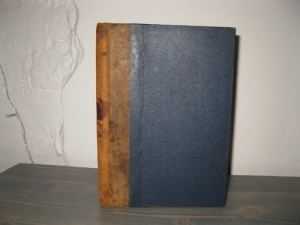 Siegbert Tarrasch. The Queen
Author:
Siegbert Tarrasch. The Queen
Author:
Tarrash 72.50 $ -
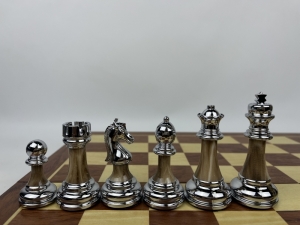 High quality acrylic metal heavy chess pieces with wooden board
202.50 $
High quality acrylic metal heavy chess pieces with wooden board
202.50 $
-
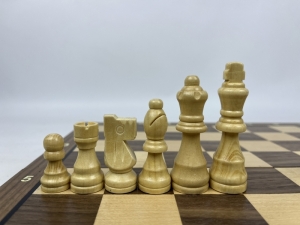 Wooden magnetic Staunton chess with a lock (silver)
56.25 $
Wooden magnetic Staunton chess with a lock (silver)
56.25 $
-
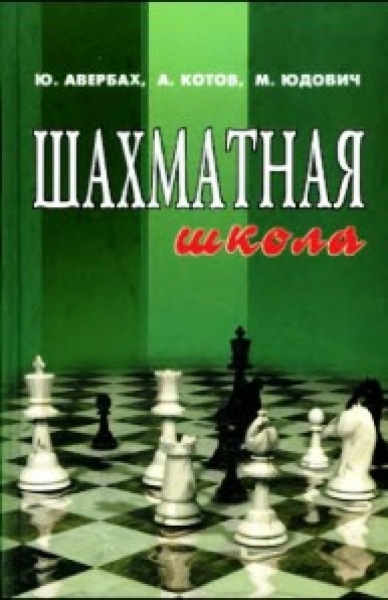 Chess school
Author:
Chess school
Author:
Averbah 15.00 $ -
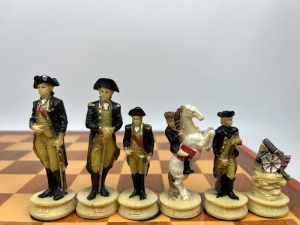 The chess set of The Chessmen. US war - Great Britain
325.00 $
The chess set of The Chessmen. US war - Great Britain
325.00 $
 Русский
Русский  Английский
Английский 
